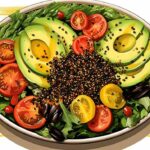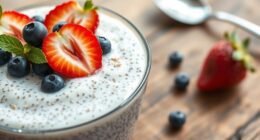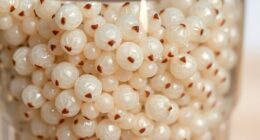Have you ever thought about the historical cultivation and uses of chia seeds, in addition to their well-known health benefits?
Let’s dive into the fascinating world of chia and discover its ancient origins, its role in Mesoamerican civilizations, and its importance as a staple food source.
We’ll also explore the medicinal and ritualistic uses of chia and how it fell out of favor, only to be rediscovered by health-conscious individuals today.
Get ready to uncover the secrets of this incredible superfood!
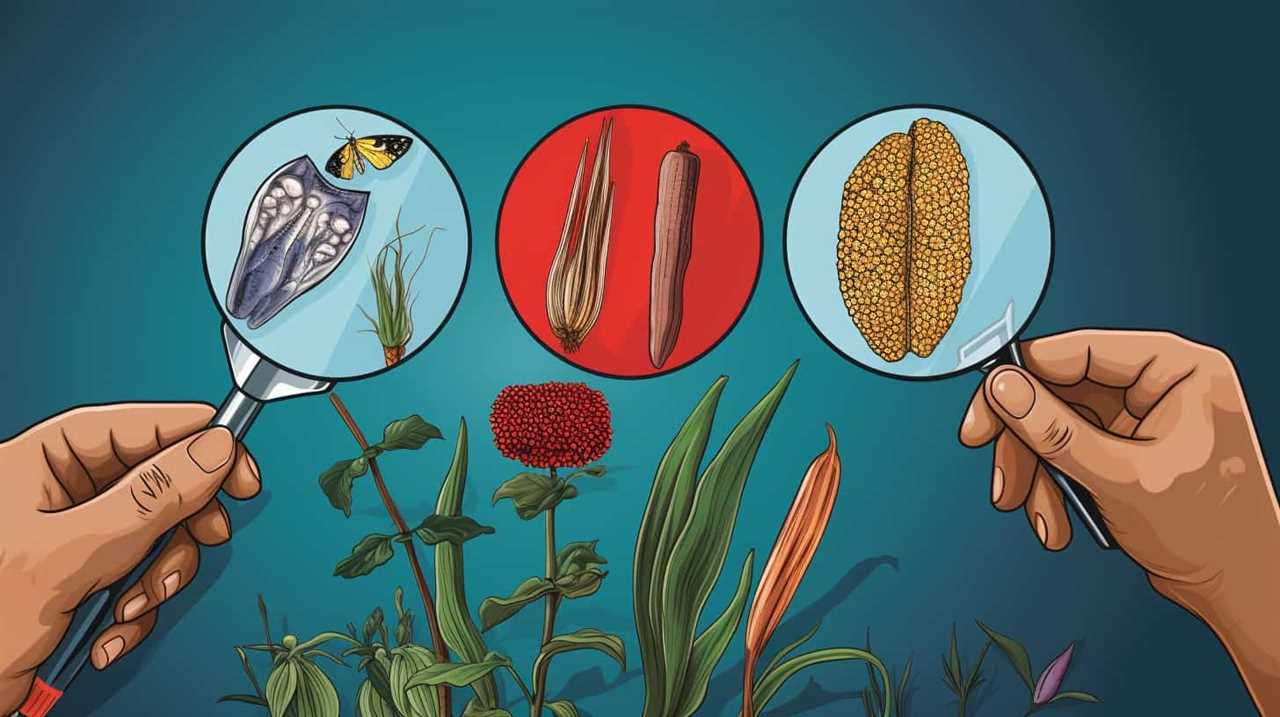
Key Takeaways
- Chia seeds have a long history of cultivation and were considered a staple food by ancient civilizations such as the Aztecs and Mayans.
- Chia seeds were versatile in the culinary world and were used in various dishes, including flour, soups, sauces, and beverages.
- The decline in chia seed cultivation and consumption was due to the disruption of traditional agricultural practices and the rise of processed foods.
- The resurgence of interest in chia seeds is driven by their numerous health benefits, including being rich in omega-3 fatty acids, fiber, protein, and antioxidants.
Ancient Origins and Early Cultivation
The ancient origins and early cultivation of chia seeds can be traced back to indigenous civilizations in the Americas. These civilizations recognized the nutritional benefits and culinary uses of chia seeds, which led them to cultivate and incorporate them into their diets. Chia seeds were highly valued for their high protein content, rich omega-3 fatty acids, and abundance of antioxidants. These nutritional benefits made chia seeds an important food source, especially during times of scarcity.
Additionally, chia seeds were versatile in the culinary world. They could be ground into flour, used as a thickening agent in soups and sauces, or added to beverages for a nutritious boost. The ancient cultivation of chia seeds by indigenous civilizations demonstrates their understanding of the health benefits and practical uses of this superfood.
Chia Seeds in Mesoamerican Civilizations
Cultivating chia seeds played a significant role in the diets and cultures of Mesoamerican civilizations. The people of Mesoamerica recognized the importance of chia seeds in their agricultural practices and incorporated them into their daily lives.
Here are some key points about chia seeds in Mesoamerican civilizations:

- Chia seeds were an essential component of Mesoamerican agriculture, as they were easy to grow and provided a reliable source of food.
- These civilizations recognized the high nutritional value of chia seeds, which are rich in omega-3 fatty acids, fiber, protein, and various vitamins and minerals.
- Chia seeds were used in a variety of culinary preparations, including beverages, porridge, and bread.
- They were also used medicinally, believed to have healing properties for various ailments.
- Chia seeds held cultural and religious significance, often used in rituals and ceremonies.
Chia as a Staple Food Source
Chia seeds served as a significant staple food source for Mesoamerican civilizations. These tiny seeds were highly valued for their nutritional benefits and were a crucial part of the Mesoamerican diet. Today, chia seeds have regained popularity due to their numerous health benefits.
| Nutritional Benefits | Modern Day Popularity |
|---|---|
| High in Omega-3 Fatty Acids | Used in various recipes such as smoothies, puddings, and baked goods |
| Rich in Fiber | Added to cereals, yogurt, and salads for an extra nutritional boost |
| Packed with Antioxidants | Popular among health-conscious individuals for their potential anti-inflammatory properties |
Chia seeds are not only nutrient-dense but also versatile in their usage. They can be easily incorporated into a wide range of dishes, making them a convenient and healthy addition to any diet. From providing essential fatty acids to promoting digestive health, chia seeds continue to be celebrated for their nutritional benefits and modern-day popularity.
Medicinal and Ritualistic Uses of Chia
After recognizing the nutritional benefits of chia seeds, Mesoamerican civilizations also discovered their potential for medicinal and ritualistic purposes. Chia seeds weren’t only valued for their ability to nourish the body, but also for their medicinal properties and spiritual significance. Here are five ways in which chia seeds were used in Mesoamerican cultures:
- Chia seeds were believed to have healing properties and were used to treat various ailments such as digestive issues, skin conditions, and inflammation.
- Chia seeds were often used in religious ceremonies and rituals due to their symbolic significance and association with fertility and abundance.
- They were used as offerings to the gods, as a way to connect with the spiritual realm and seek blessings.
- Chia seeds were also used in traditional medicine to boost energy and stamina, making them popular among warriors and athletes.
- Additionally, chia seeds were used in poultices and ointments to promote wound healing and relieve pain.
With their medicinal and spiritual significance, chia seeds played an important role in the daily lives of Mesoamerican civilizations. However, over time, the use of chia seeds declined and they were largely forgotten. But their rediscovery in recent years has reignited interest in their many benefits, both nutritional and medicinal.
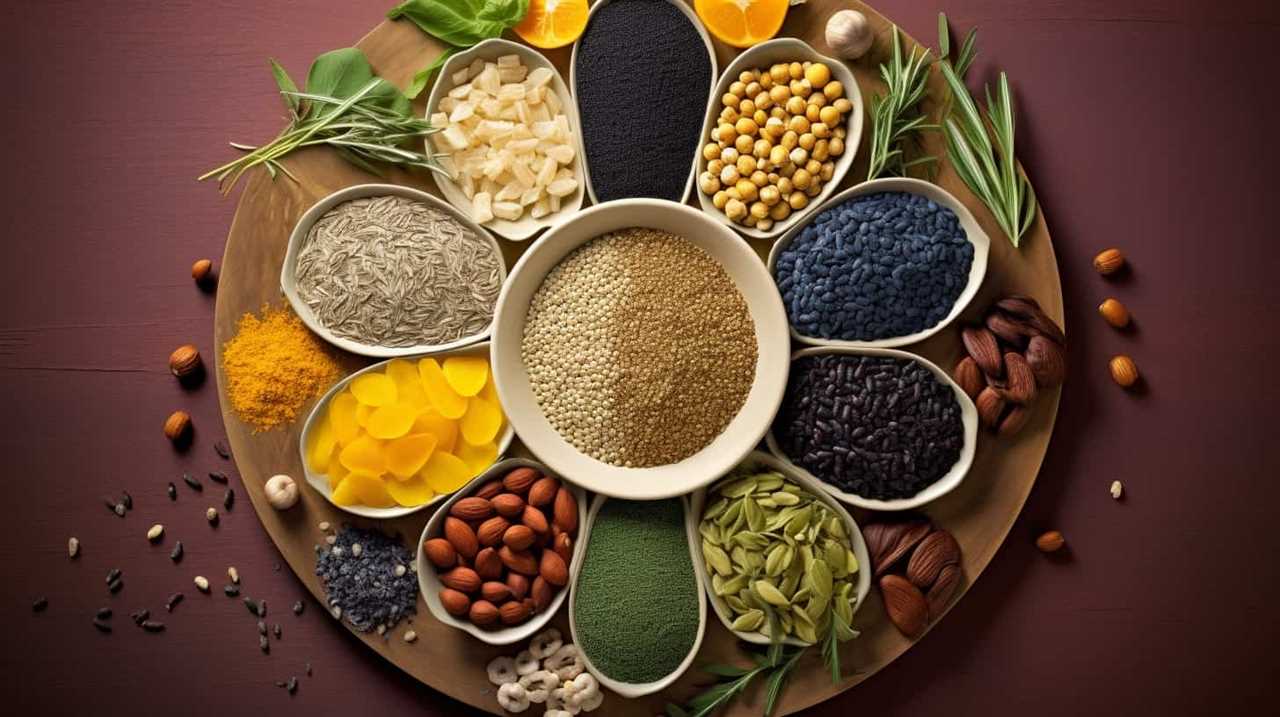
Decline and Rediscovery of Chia Seeds
As we delved into the medicinal and ritualistic uses of chia seeds in Mesoamerican cultures, their decline and subsequent rediscovery became an intriguing aspect to explore.
Despite being a staple in ancient civilizations, chia seeds experienced a decline in cultivation and consumption over time. This decline can be attributed to various factors, including the arrival of European colonizers who introduced new crops and disrupted traditional agricultural practices. Additionally, the rise of industrialization and the shift towards processed foods led to a decline in the consumption of traditional, nutrient-dense foods like chia seeds.
However, in recent years, there’s been a resurgence of interest in chia seeds due to their numerous health benefits and versatility in modern diets. As people become more health-conscious and seek natural alternatives, chia seeds have regained popularity as a nutritious addition to smoothies, baked goods, and other dishes.
Frequently Asked Questions
How Were Chia Seeds Traditionally Harvested and Processed?
Traditional harvesting and processing methods for chia seeds involved carefully collecting the mature seed heads, drying them, and then threshing to extract the seeds. The seeds were then cleaned and stored for later use.
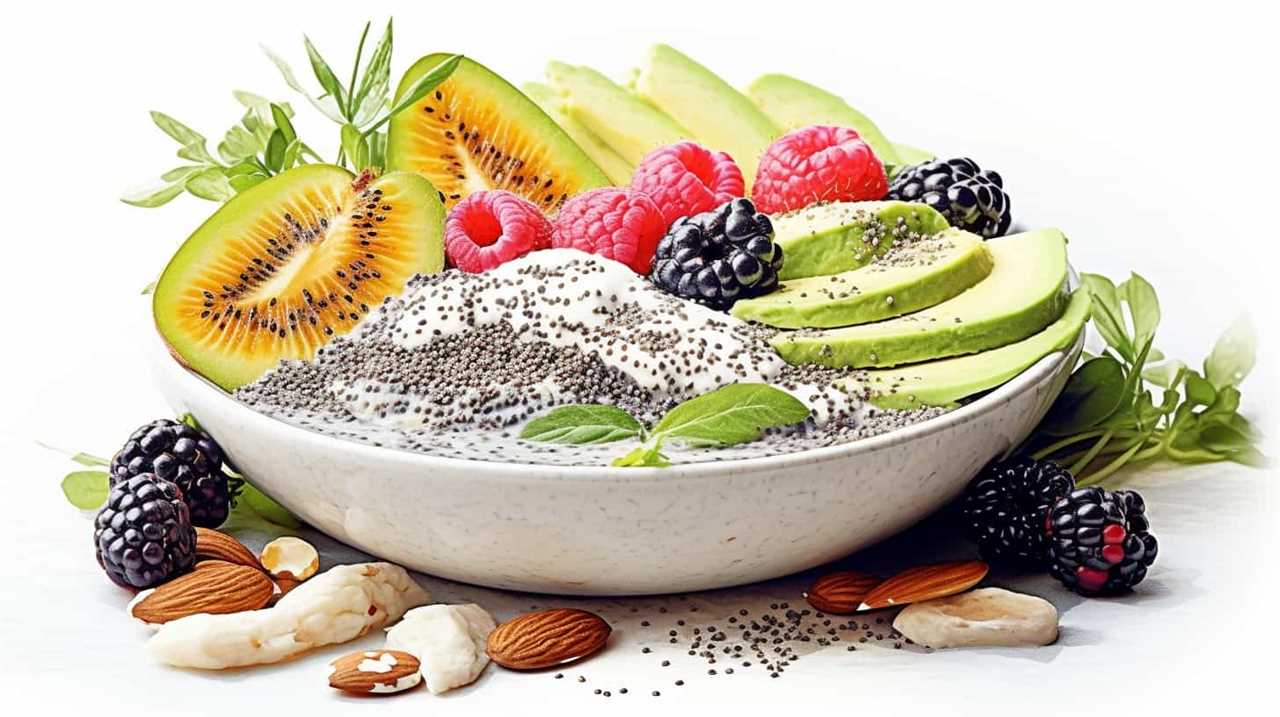
Were There Any Specific Rituals or Ceremonies Associated With the Cultivation and Use of Chia Seeds?
Ritualistic practices and ceremonial significance were present in the cultivation and use of chia seeds. These traditions held deep cultural meaning and showcased the reverence and respect given to this sacred plant.
What Other Crops Were Commonly Grown Alongside Chia Seeds in Mesoamerican Civilizations?
Crop rotation was a common practice in Mesoamerican civilizations. Chia seeds were often grown alongside other crops, such as maize and beans. This agricultural practice helped maintain soil fertility and maximize crop yields.
Were There Any Specific Techniques or Methods Used to Incorporate Chia Seeds Into Daily Meals?
Incorporating chia seeds into daily meals involves experimenting with recipes and cooking techniques. We explore the various ways chia seeds can enhance our dishes, adding a nutritious twist to our culinary adventures.
How Did the Decline of Chia Seeds as a Staple Food Source Impact the Cultures That Historically Relied on Them?
The decline of chia seeds as a staple food source had a significant impact on the nutrition and cultural practices of the societies that relied on them historically.
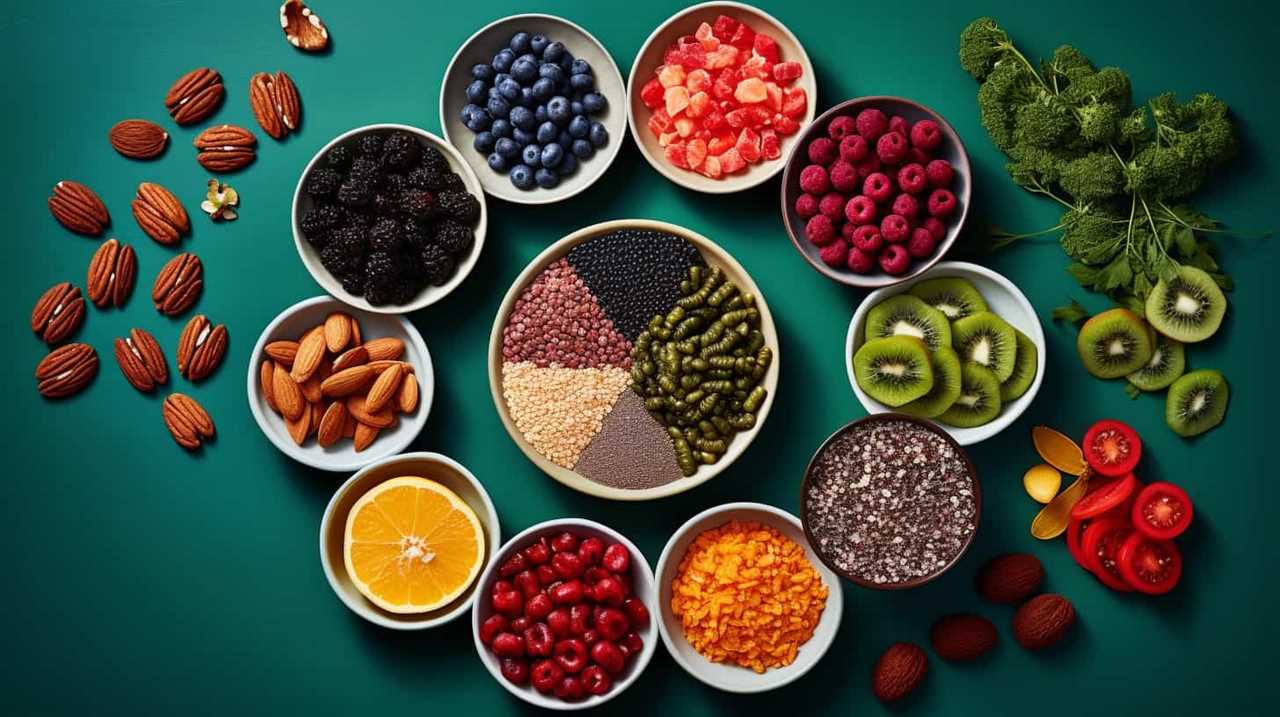
Conclusion
In conclusion, chia seeds have a rich and diverse history, being cultivated and used for various purposes throughout ancient civilizations. From their origins as a staple food source in Mesoamerican cultures to their medicinal and ritualistic uses, chia seeds have played a significant role in human life.
Although their popularity declined over time, the rediscovery of chia seeds has brought them back into the spotlight, highlighting their nutritional value and potential health benefits.







